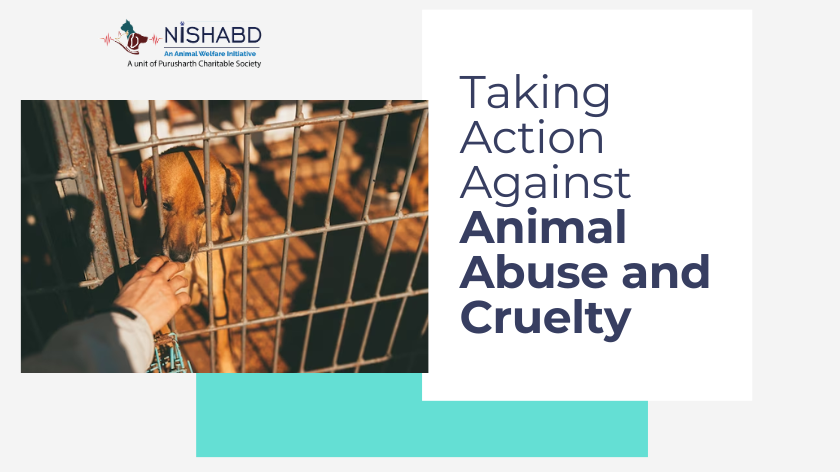In a world where silence often envelops the cries of the voiceless, the fight against animal cruelty presents itself as both a moral imperative and a profound responsibility. Just as a river shapes the landscape it traverses, so too can our actions shape a brighter future for animals. Taking action against animal cruelty requires not only awareness but also a commitment to advocacy and practical steps that ripple outward, creating a wave of change. This guide serves as a practical roadmap for those determined to make a difference in the lives of countless sentient beings.
Understanding Animal Cruelty
Animal cruelty manifests in various forms—neglect, abuse, abandonment, and exploitation, to name a few. Each of these violations wounds the delicate fabric of life that connects all species. Recognizing the signs of animal cruelty is the first step in promoting welfare. Individuals should educate themselves about the signs of physical abuse, such as injuries, malnourishment, or extreme fearfulness. Equally important is an understanding of psychological abuse that is less visible yet equally damaging. Animals left in isolation or subjected to harsh training methods develop emotional scars that can last a lifetime.
Mobilizing Local Communities
The heart of advocacy beats strongest within communities. Mobilizing local residents, businesses, and organizations creates a united front against cruelty. Start by organizing community meetings to raise awareness about local issues pertaining to animal welfare. Create informative pamphlets that highlight horrific case studies, alongside inspiring success stories of recovery and rehabilitation. Use social media platforms to disseminate information rapidly, reaching a broader audience. When individuals collectively demand change, their voices combine into a symphony that even the most hardened hearts cannot ignore.
Hosting events like “Compassionate Consistency”—a community gathering designed to educate participants on humane treatment and care for animals—can garner significant attention. These gatherings provide a space for sharing ideas, discussing legislative measures, and brainstorming solutions to prevalent problems like overpopulation and abuse. Consider involving local animal shelters and activists who can offer direct insights into the challenges faced within the community.
Advocating for Legislative Change
While grassroots movements and community education are vital, systemic change requires effective legislation. Understanding local and federal animal welfare laws is crucial; this knowledge empowers advocates to push for stricter penalties for offenders and greater protections for vulnerable animals. Attend town hall meetings, participate in public forums, and approach lawmakers with compelling arguments and real-world examples detailing the impact of animal cruelty.
Draft petitions to circulate among your community. Encourage signatures from individuals who are passionate about animal welfare. A well-supported petition can exert pressure on government officials to introduce more robust legislation aimed at curbing abuse and ensuring humane treatment of all animals. Presenting a unified, persuasive voice can catalyze change that reverberates throughout society, demonstrating that compassion is a societal benchmark.
Supporting Local Shelters and Rescues
Local animal shelters and rescue organizations are on the front lines of the battle against cruelty. Supporting these institutions—not only through donations but also by volunteering time and resources—is essential. Shelters often struggle with limited funding and high populations of abandoned or abused animals and can benefit from community support in myriad ways.
Volunteering helps shelters mitigate the burden of care while allowing advocates to interact with animals in need. This experience fosters a deeper understanding of the direct consequences of cruelty and the necessity of intervention. Moreover, hosting fundraising events can contribute significantly to the operational needs of these organizations, enabling them to provide shelter, medical care, and love to countless animals.
Utilizing Social Media as a Catalyst
In the digital age, social media serves as an unparalleled platform for raising awareness about animal cruelty. Craft poignant and engaging posts that tell the stories of specific animals rescued from dire situations, providing a face to what might otherwise remain an abstract issue. Use visually compelling images to evoke empathy and stir emotional responses. Each post can inspire followers to take immediate action—whether that’s donating, volunteering, or sharing the content to reach an even wider audience.
Strategically utilize hashtags and campaigns to join larger movements against animal cruelty. Participating in global events such as “World Animal Day” or “Adopt a Shelter Pet Month” can enhance visibility and impact while fostering unity across different advocacy groups.
Educating Future Generations
The seeds of compassion sown in childhood can yield a harvest of kindness in the future. Integrating animal welfare education into school curricula can empower young minds to cultivate empathy from an early age. Workshops and programs focusing on responsible pet ownership, the ethical treatment of animals, and the importance of adoption over purchasing pets can foster a sense of responsibility towards animals.
Encouraging children to engage in volunteer opportunities at local animal shelters or participate in community awareness campaigns can instill values of compassion and advocacy. By grooming the next generation of animal advocates, we ensure that the fight against cruelty continues and evolves into a formidable movement.
Conclusion
Taking action against animal cruelty is not merely a singular effort but a collective journey. By intertwining community activism, educational initiatives, legislative advocacy, and support for local organizations, advocates can create a formidable force against the atrocities faced by countless animals. Each step taken echoes the belief that every life is worthy of respect, care, and kindness. Together, as stewards of compassion, we can endeavor to create a world where the cry of the voiceless does not go unheard, and the beauty of all creatures is celebrated and protected.








